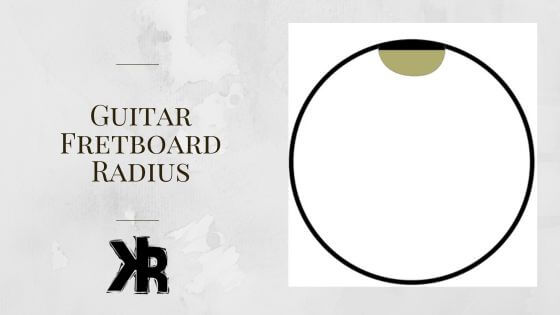Table of Contents
The guitar is an incredibly versatile instrument. There are countless variations in design, materials, and construction techniques.
The guitar fretboard radius is a key aspect. It significantly impacts a guitar’s playability and feel. But it’s not normally a consideration that comes to mind right away.
This Killer Rig article aims to provide an in-depth understanding of guitar neck radius. We will explore its importance, and how to choose the right one for your specific needs.
What is Guitar Fretboard Radius?
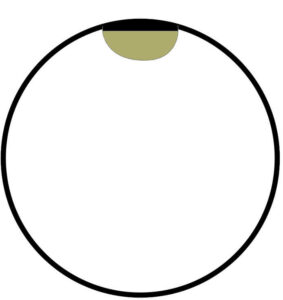
The guitar fretboard radius is the term used for the curvature of a fingerboard. This is part of the design of a guitar and is cut into the neck purposely.
Imagine a circle with a specific curve. Then, picture a section of that circle’s edge as the surface of the fretboard.
This curvature allows for a more comfortable and natural fit for your fingers. Especially as they move across the strings. The radius is not the same as the neck shape or profile. This is often mistaken to be one and the same.
The curvature of the fretboard directly affects how a guitar feels in the player’s hand. And overall, the playability. A smaller radius (more curved) provides a more natural grip for the hand. This makes it easier to play chords and fret notes with less finger strain.
On the other hand, a flatter radius (larger) allows for lower string action and easier bending. It’s particularly beneficial for lead guitarists and those who play fast solos.
The ease of playing barre chords is also directly affected. It dictates how much pressure is required to fret notes cleanly.
How Is Radius Measured?
In the world of guitar-making, we talk about the radius. It’s a simple concept, really. Picture a circle and its center. Then, measure in inches from that center point straight to the edge.
This measurement gives us the radius, and it’s crucial because it decides the bend of the fretboard. For instance, a radius of 7.25″ results in a perfectly circular contour on the fretboard.
But here’s where it gets interesting. If you have a smaller circle, the fretboard becomes more curved. It’s quite intuitive when you think about it, a smaller circle, a tighter bend.
On the flip side, a larger circle means a flatter fretboard. Think of it this way: the smaller the circle, the more the fretboard resembles a round hill. A larger circle leads to a fretboard as flat as a tabletop.
The image below shows the center point of the circle out to the edge. This is where the radius is measured.
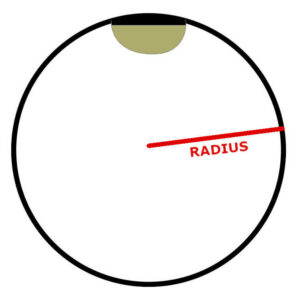
Popular Fretboard Radii
There are many fretboard radius options available, and guitarists like each one for different reasons. Here are the more popular offerings:
Vintage 7.25 Inch
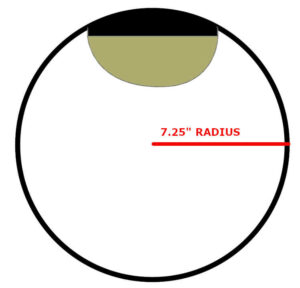
The 7.25 inch option is commonly referred to as the vintage radius. It was standard on many early Fender guitars from the 1950s and ’60s. This curvature provides a comfortable grip, making it ideal for rhythm guitarists who play a lot of chords.
However, the pronounced curve can make string bending more challenging. Especially with lower string action, as it may cause fretting out or buzzing. And so you will find lead players tend to prefer a flatter fretboard radius.
Modern 9.5 to 12 Inch
Many modern guitars feature a neck radius between 9.5 and 12 inches. It offers a good balance between comfort and playability. It’s a much flatter fretboard, which allows for easier string bending. But also lower string action without the risk of fretting out.
This option is popular among a wider variety of guitarists. Players from rock and blues to country and jazz musicians. You will find that most American series Fender guitars have a 9.5 inch radius. While Gibson guitars like the Les Paul feature a 12 inch.
Compound Radius 10 to 16 Inch
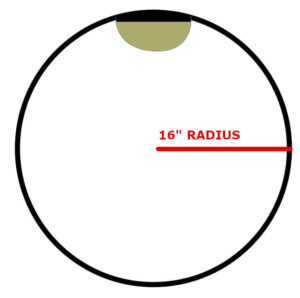
A compound radius fretboard gradually flattens as it moves from the nut towards the bridge. This design combines two aspects.
The comfort of a smaller radius at the lower frets for chording. And the benefits of a flatter board at the higher frets for lead playing and string bending.
Guitars with compound radius fretboards have become increasingly popular in recent years. Especially among progressive rock and metal players.
Guitarists who require the versatility of both chords and shredding. It’s a very versatile design! But it does mean more complex manufacturing, which can lead to more expensive guitars.
For me, the compound radius was a noticeable improvement to the comfort of the neck. I first discovered it on an American Deluxe Stratocaster which has a taper of 9.5 to 14 inch. The image below is a great representation of what I mean:
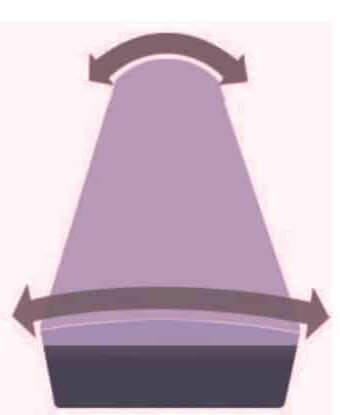
Popular Brand Radius
Below you will find a table with some of the more common fretboard radii used by popular guitar brands.
| Brand | Fretboard Radius (Inches) |
|---|---|
| Charvel | 12 to 16 |
| Epiphone | 12 |
| Fender | 7.5 to 12 |
| Gibson | 12 |
| Ibanez | 12 to 16 |
| Jackson | 16 |
| Martin | 16 |
| PRS | 10, 11, 12 |
| Schecter | 12 to 16 |
| Taylor | 12 |
| Yamaha | 16 |
Which Fretboard Radius is Easiest to Play?
The easiest guitar neck radius depends on individual preferences and playing styles. However, for many players, the 7.25 inch is often considered easier. This is due to its more pronounced curvature.
It provides a comfortable grip and makes it easier to play chords and fret notes with less finger strain. This is particularly beneficial for rhythm guitarists and beginners. Guitarists who focus on playing chords.
On the other hand, lead guitarists will need something larger. Players who frequently bend strings might find a larger radius like 12 inches to be their best choice.
A compound radius can also be quite comfortable. It allows for easier bending and lower string action.
What is the Best Radius for Small Hands?
Choosing the best fretboard curvature for small hands can be a crucial factor. Generally, the vintage 7.25″ radius is more accommodating. The curvature makes it easier to play chords and fret notes without finger strain.
However, comfort is subjective! And other factors can come into play when selecting the right neck radius.
Players with small hands might appreciate a modern bow like 9.5 or 12 inches. Maybe even a compound contour for a balance between chording and lead playing. You need to try them to know for sure.
In addition to the neck radius, other aspects like the profile are important to consider. Neck shapes also play a large role in the comfort of a neck. Players with small hands will need to look at both factors.
Famous Guitarists and Their Favorite Radius
It can be helpful to see what other players prefer. First consider their play style and music choice. Then see what neck contour they like. This might help you select a better fit.
- Eric Clapton: Clapton prefers a vintage 9.5-inch radius on his signature Fender Stratocaster. It suits his bluesy playing style and facilitates comfortable chording.
- Eddie Van Halen: The late Eddie Van Halen was known for his innovative playing techniques. His signature EVH Wolfgang guitars feature a compound radius. They range from 12 to 16 inches. It allows for smooth chording and effortless string bending.
- John Mayer: Known for his soulful blues and pop-infused playing, John Mayer has played various guitars throughout his career. His signature PRS Silver Sky model features an 8.5-inch radius. This provides a comfortable balance between vintage and modern playability.
Conclusion
Understanding the neck radius is essential for any guitarist. Especially players looking to improve their experience and find the perfect guitar. From vintage to modern and compound radii, each type offers specific benefits and drawbacks.
And each caters to different playing styles and genres. By considering the factors mentioned in this article, you can make an informed decision. Ultimately, finding the right contour for you!

